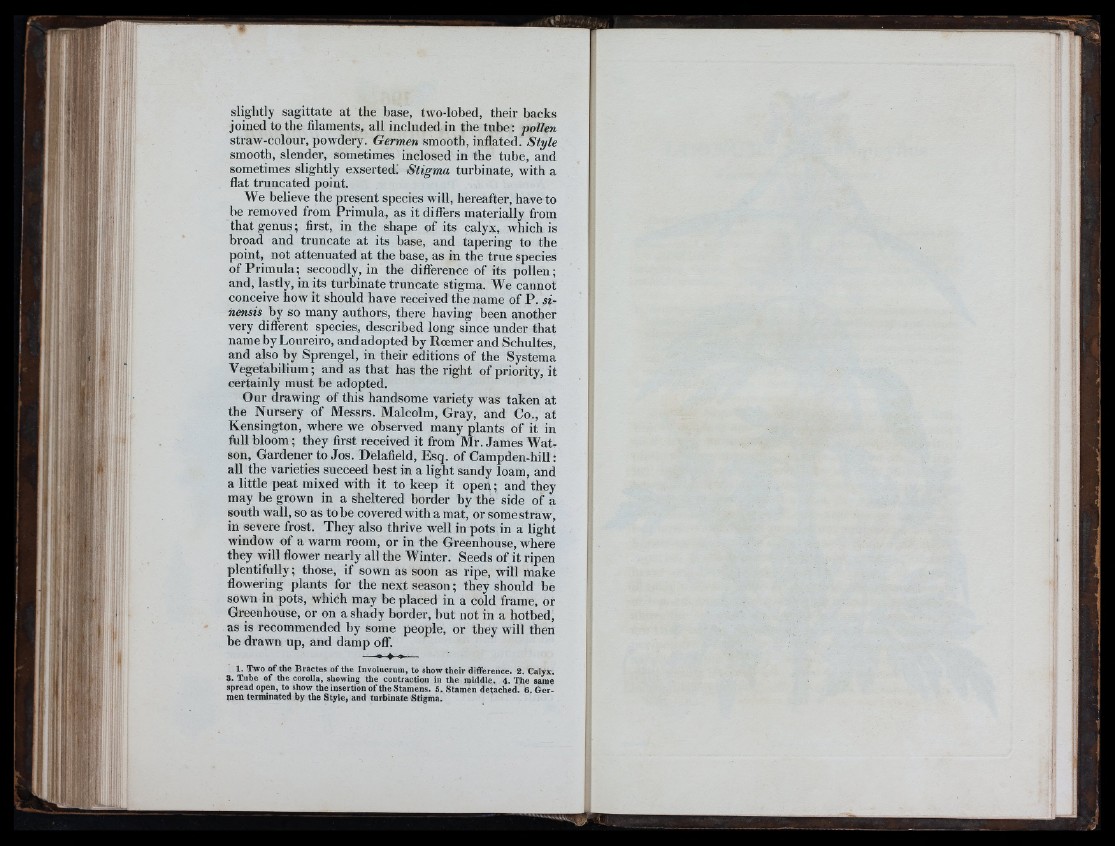
slightly sagittate at the hase, two-lohed, their hacks
joined to the filaments, all included in the tuhe : pollen
straw-colour, powdery. Germen smooth, inflated. Style
smooth, slender, sometimes inclosed in the tuhe, and
sometimes slightly exserted! Stigma turhinate, with a
flat truncated point.
We helieve the present species will, hereafter, have to
he removed from Primula, as it differs materially from
that genus; first, in the shape of its calyx, which is
hroad and truncate at its hase, and tapering to the
point, not attenuated at the hase, as in the true species
of Primula; secondly, in the difference of its pollen;
and, lastly, in its turbinate truncate stigma. We cannot
conceive how it should have received the name of P. sinensis
by so many authors, there having been another
very different species, described long since under that
name by Lonreiro, and adopted by Rcemer and Schultes,
and also by Sprengel, in their editions of the Systema
Vegetabilium; and as that has the right of priority, it
certainly must be adopted.
Our drawing of this handsome variety was taken at
the Nursery of Messrs. Malcolm, Gray, and Co., at
Kensington, where we observed many plants of it in
full bloom; they first received it from Mr. James Watson,
Gardener to Jos. Delafield, Esq. of Campden-hill:
all the varieties succeed best in a light sandy loam, and
a little peat mixed with it to keep it open; and they
may be grown in a sheltered border by the side of a
south wall, so as to be covered Avith a mat, or some straw,
in severe frost. They also thrive well in pots in a light
window of a warm room, or in the Greenhouse, where
they will flower nearly all the Winter. Seeds of it ripen
plentifully; those, if sown as soon as ripe, will make
flowering plants for the next season; they should be
sown in pots, which may be placed in a cold frame, or
Greenhouse, or on a shady border, but not in a hotbed,
as is recommended by some people, or they will then
be drawn up, and damp otF.
— —
1. Two o f the Brac tes o f th e Involacrum, to show th e ir difference. 2. Calyx.
3. Tube o f the corolla, showing the contraction in th e middle. 4. The same
spread open, to show the insertion o f the Stamens. 5. Stamen detached. 6. G e rmed
terminated by the S ty le , and tu rb in ate Stigma.